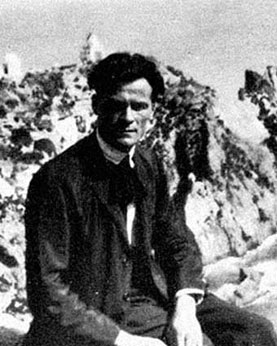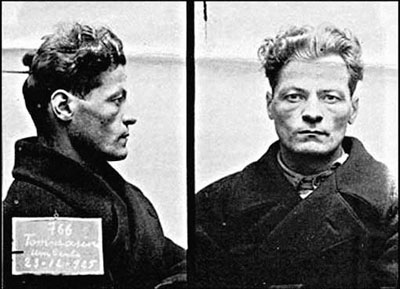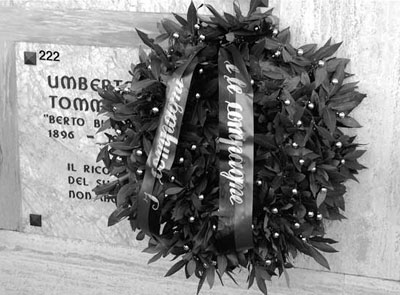| Meeting in Paris
and Nagoya Summit
At the "Conference of the Convention on Biological Diversity in Nagoya (October 18 to 29) had been filed under the supervision of some big names in finance, a report on the economics of ecosystems and biodiversity to enter the natural world in the value economic value. "Nothing new.
For some time many large companies seek to rebuild their virginity by proclaiming their commitment to human rights, environment and biodiversity, using Trojan horses abused the concept of "sustainable development" and "green growth".
Last year, while Areva (a major player in the extraction of uranium in Africa, both in Namibia and in Niger) is claimed to protect a rare species of lichen in Namibia, the chemical company BASF claimed to have plants and flowers planted on two thousand acres of rural France.
Similarly, one of the largest manufacturers of mobile phones as input to the children of the north-east Congo. In these territories, as well as indigenous people, animals face extinction like the okapi el'ippopotamo nano.
It was then discovered that to preserve the lichen Areva had diverted the course of a river that joins its plant in desalination of sea water (Swakopmund) to mine uranium Trekkopje, also owned by French company. In the past (when Namibia was occupied by South Africa who had also introduced apartheid) Namibian uranium mines were notorious for the high mortality of miners. So contaminated that, when they returned to their villages, even unintentionally caused the death of their wives and children. Instead, BASF was the main person responsible for marketing of fipronil, the active substance of the insecticide Regent, suspected of being a major cause of mortality of bees.
For the Congo, just remember that in areas where we extract coltan (essential for mobile phones) the girls are victims of abuse (rapes, abuse ...) by the militia of the Rwandan and Congolese military to occupy the precious mineral.
A concentration of this "environmentalist rhetoric" was manifested in Paris October 19, 2010 at the conference "Businnes and biodiversity." Among those present came to celebrate the Year of Biodiversity, representatives of Total, Veolia, Electricité de France, Lafargue and, indeed, Areva. Several representatives of MEDEF (the Confederation of French) and the World Businnes Council for Sustainable Development. Both Paris and Nagoya were discussed "environmental compensation" and "monetary value to be attributed to ecosystems" to determine costs and compensation for environmental degradation.
In line with these principles, the Caisse des depots et consignations has created the 'financial services compensation for biodiversity "by intervening in environmental restoration projects. Some executives willing Paribas, a major French banking groups, have gone further. They participated in an event (think cycling and false beards, disguised as activists) organized by the Fondation Good Planet in climate protection. Particular not insignificant, Paribas would be a major sponsor of the Environmental Foundation. But most of all would be involved in projects responsible for serious environmental damage as Sakalin II (oil project in Russia), a nuclear power plant in Bulgaria and the construction of some dams in Laos. Also control shares of companies producing cluster bombs and other operating in the extraction of oil sands in Canada.
As for girls in the Congo and coltan, someone must have alerted the manufacturer of mobile phones that "maybe it was not the case" and the spot has quickly disappeared.
 Gianni Sartori Gianni Sartori
Biodiversity
and Infectious Diseases
In a recent issue of the journal Nature, researchers from British and U.S. argued that, contrary to what one might think, the erosion of biodiversity does not reduce the risk of infectious diseases. At least for the diseases considered, including malaria, Nile fever, Lyme disease and various types of hemorrhagic fever, the reverse is true. The same with other diseases that affect animals and plants.
While the decline of world populations of mammals, birds, reptiles, amphibians, fish and invertebrates after 1970 to 30% over the past sixty years have been classified more than three hundred new infectious diseases. In this issue, researchers have included those caused by staphylococci resistant to antibiotics, the pre-existing conditions that are also transmitted to humans (the AIDS virus and some particularly acute respiratory syndrome) and others which has expanded significantly in the 'geographical area (some African and Asian origin of diseases previously unknown in Europe and the U.S.).
Establish a mechanical connection between the two phenomena would be simplistic, since the transmission of an infectious disease depends on a number of factors. In addition to pathogens (viruses, bacteria, parasites ...) should be considered in the vectors (ticks, lice, mosquitoes, some birds and mammals ...) and the environment. Among the examples in Nature, one of the ticks that transmit Lyme disease, sometimes fatal, initially identified in the U.S.. Ticks feed on the blood of both white-footed mice of the opossum, the only survivor of the marsupials outside Australia. The populations of possums, very rarely carry the offending bacteria, acted as "buffer species" until the destruction of forests has left the field open to the mice, called a "vast reservoir of bacteria. " Also in the U.S., recent studies confirm that cases of encephalitis caused by West Nile virus (transmitted by mosquitoes, but hosted by a few sparrows) are greater where the variety of birds is scarce. The loss of biodiversity affect predators and competitors of the holders of pathogens by encouraging the growth and spread. In many cases it was observed as the most resistant species, able to adapt to environmental degradation, are (or become?) even the largest carriers of pathogens.
The harmful effects of the gradual erosion of biodiversity are then amplified by the overlap of other factors (population growth, increased trade, farming, global warming) that modify the geographical distribution of species to transmit infectious disease.
 Gianni Sartori Gianni Sartori
 |
Umberto Tommasini banished
to Ponza, in 1928 |
Remembering
Umberto Tommasini
A lot of people, many interventions 30 years after his death
Monday, January 17, 2011
Over one hundred people packed the hall to remember, and tell about the anarchist Umberto Tommasini Vivaro, Trieste adoption that all my life has never retreated one step on the road to anarchy.
Comrades from Pordenone, Trieste, Udine, near the Veneto, then the people of that region of origin that Umberto has always been deeply tied to posts and still close by those who knew him and could not be arrived Carrara, Rome, Milan in the previous days.
A day full of actions that have raised on several occasions enthusiasm, emotion and above all listen, pay attention in a crowded room for a few moments that seemed unable to accept any more than forcing someone to crowding on the gallery entrance.
A program that began with the screening of some of the interviews with Umberto its participation in the social revolution in Spain, the first volunteer hours to rescue comrades of the CNT-FAI in Barcelona. He then continued with the part dedicated to the legacy of books, pamphlets and documents of the family Tommasini (of which part of the same Umberto) and directed by Gianluigi Bettoli, local historian, who focused on the most important aspects of this fund, now part the public library Vivaro as a cultural heritage of outstanding value.
The central part of the morning then saw action Claudio Venza and Clara Germani, both the anarchists anarchist group Germinal of Trieste, the same group of Umberto when he actively campaigned until the last moments of his life. Claudio Venza as a historian has traced the history of intense and adventurous life of Tommasini pausing several times to decide on significant moments and the contents of his battles anarchist.
Clara Germani then recounted his efforts in writing a book now sold out on the life of Humbert, the oral interview dozens of tapes to listen to recordings with the typewriter, then the only way, and enriching the narrative with personal anecdotes in his relations with Umberto.
 |
Umberto Tommasini: The first mugshot
placed before the Court of Criminal central policy. |
Before the Music Out, which proposed a short path between songs reportorio historical anarchist, there was ample room for free interventions in which peers who knew him as well as friends and acquaintances have taken each with its own history, their memories by transpire clearly the great humanity of Humbert, the strong sense of ethics libertarian that animated him and at the same time the determination with which he conducted his choice anarchist to the end. In the heart of Friuli, which is characterized by the interference and Catholic clergy, many people had attended his funeral in 1980 strictly secular.
Fifty comrades have since gone, with a short procession to the cemetery of their Vivaro to deposit a wreath on his grave with the word "comrades, companions. " Yet there have been interventions with the ultimate greeting heard by all.
 |
Vivaro (Pordenone), January 16, 2011 - The crown placed
on the tomb of Umberto Tommasini. |
Finally, it is important to note that although 30 years have passed since his death, in the small town of Vivaro, an event like this has caused some concern for the law enforcement authorities to the presence of plainclothes police and Digos, arrived at the initiative began, probably surprised by a blacksmith so much interest in anarchist in 1896. Once again, the credit is all his own.
Hello Umberto, Vivarini, Friuli, Trieste, Italian, Catalan, Spanish, and above all internationalist anarchist.
 Nestor Nestor
 |
Vivaro (Pordenone), January 16, 2011 - A group of
comrades around the tomb of Umberto Tommasini,
in the thirtieth anniversary of his death. |
Vivaro, thirty years after disappearance recalled the anarchic Tommasini
Full house in the city council to remember one of the "illustrious sons" of Vivaro: the anarchist libertarian Umberto Tommasini (Trieste 1896 - Vivaro 1980).
Fighter in World War I, wounded and interned at Mauthausen, Tommasini, and his brother Vittorio, in the early twenties adheres to the idea of anarchism. After serving in Ustica and Ponza sentenced to confinement in 1932 expatriates in France. Active anti-fascist in Paris, he runs out in 1936 to defend the Spanish Republic against Franco. Fighting together with Carlo Rosselli of justice and freedom and the anarchist Camillo Berneri. Back in France during the Second World War he was interned in the concentration camp of Le Vernet d'Ariège, and subsequently confined to Ventotene Renicci of Anghiari. Tommasini participates in Trieste after the war the activities of anarchists but is arrested by the occupying Anglo-American. Later he founded the club Germinal Trieste. Participate in the activities of the Anarchist Federation and director of the weekly "New Humanity". Tommasini died August 22, 1980 at Vivaro.
To reconstruct the human and historical - in a conference organized by the Club of Zapata and the anarchist group Germinal Pordenone Trieste, in collaboration with the Eco-museum Lis AGANIS - the historian Gian Luigi Bettoli, Claudio Venza and Clara Germani, who wrote an extensive biography of Tommasini. Significant, with the reconstruction of the events that have seen the anarchist libertarian hero, the report Bettoli on the important legacy of books to the public library. During the convention was screened with an interview with an audiovisual Tommasini. Several messages proximity Vivarino anarchist, also came from Carrara, Rome and Milan. At the end of the meeting those present have paid tribute to Tommasini, the cemetery of Vivaro.
 Sigfrido Cescut Sigfrido Cescut
from Messaggero Veneto of 23/01/11 |

